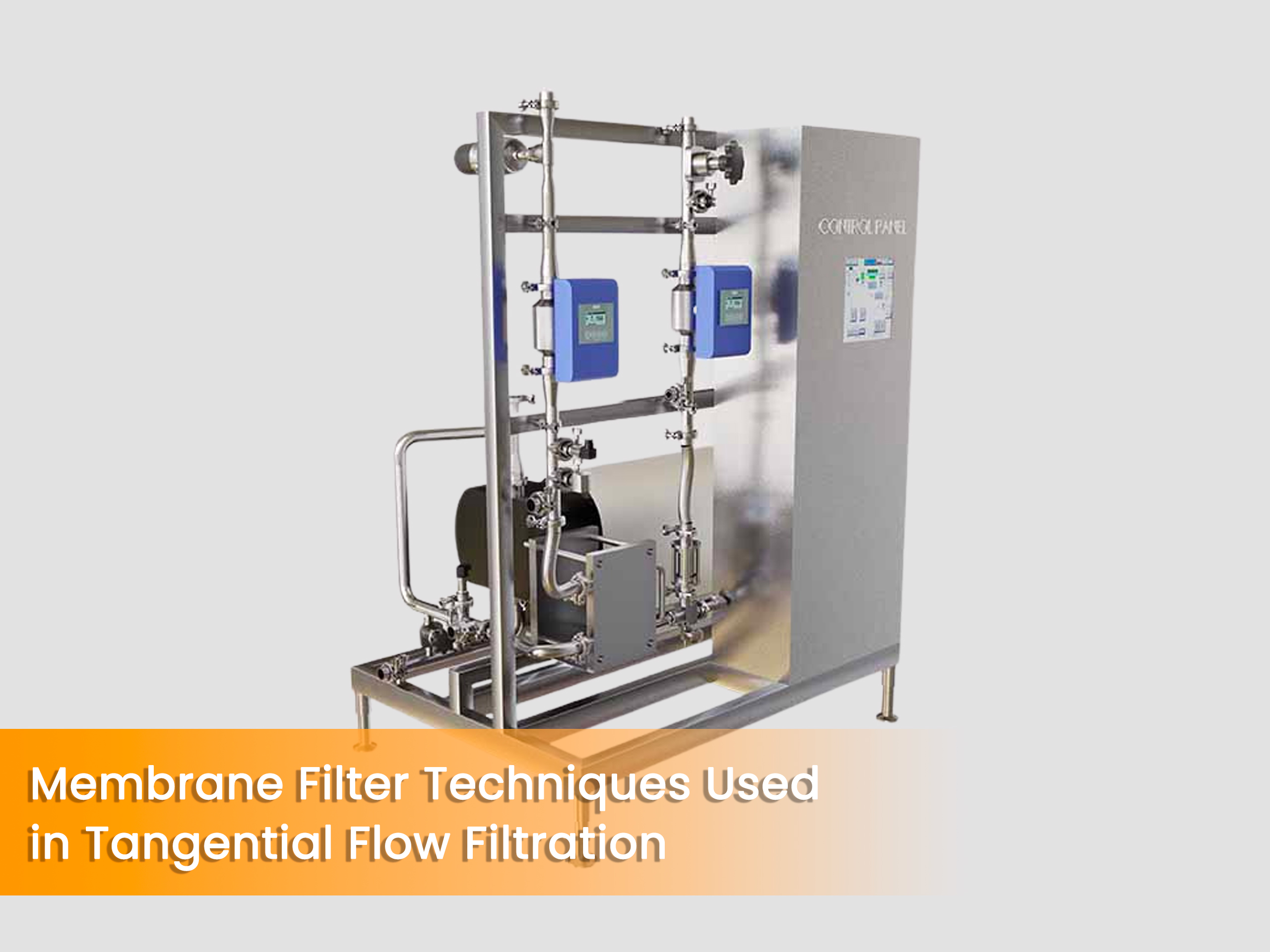Bioprocessing professionals know how disappointing it is when a potential therapeutic protein loses potency during purification. Membrane ultrafiltration has to be used with utmost care. Tangential flow filtration membrane selection isn’t merely a technical issue; it can mean success or economic loss.
What is Tangential Flow Filtration?
TFF changes biomolecule separation and cleaning. Standard dead-end filtration passes feed over the membrane. At TFF, solution flows along the membrane. This tangential flow sweeps the membrane, keeping it clean and prolonging its life.
Researchers can concentrate proteins, swap buffers, and remove contaminants with lab-scale TFF systems. The approach is utilised in biotech, pharmaceutical, enzyme, and food manufacturing.
Types of Membranes Used in TFF
There are different TFF membrane filter types:
Understanding Membrane Pore Sizes
- Microfiltration (MF) membranes remove 0.1–10 micrometre particles. They collect cells and clean lysate, removing bacteria and debris.
- Membranes used in ultrafiltration (UF) filter 0.001–0.1-micrometre molecules. Ultrafiltration membranes for biotech separate proteins, antibodies, and viruses by molecular weight. The molecular weight cutoff (MWCO) of membranes should be 3 to 6 times lower than the protein you want to clean.
- UF and reverse osmosis are separated by nanofiltration. It removes tiny molecules and multivalent ions but retains macromolecules.
Membrane Formats and Materials
Hollow fibre vs Flat sheet membrane shape: how crossflow filtration methods work:
Flat Sheet Cassettes
With woven mesh screens between the membrane layers, flat sheet cassettes stack them up. This setup makes the flow turbulent, which helps clean the membrane and stops it from getting dirty. They’re great for viruses that don’t have an envelope, like AAV, because they can handle higher shear forces and get more flux.
Hollow Fibre Modules
Hollow Fibre Modules are made up of groups of tubular fibres that can stand on their own. Feed moves through the fibre lumen in a smooth flow, which makes the processing conditions less harsh. Choose hollow fibre or flat sheet membranes based on shear sensitivity. Lentivirus and other enveloped viruses prefer this milder way.
Factors in Choosing the Right TFF Membrane
Membrane selection for TFF needs to balance many characteristics. Consider your target molecule’s size, sample viscosity, and shear sensitivity. Channel layout is also significant. Filtered solutions work best in screen channels, while viscous or particle-filled samples work best in open channels.
The volume of the process and the concentration factor needed help with membrane area calculations. The formula A = V/(J×T) helps you figure out how much surface area you need based on the volume of the filtrate, the flux rate, and the processing time.
Techniques in TFF
Concentration gets rid of solvents while keeping biomolecules, which immediately increases the concentration of the product as the volume goes down.
To do the diafiltration process steps, you need to modify the buffer or get rid of the salt. With five diafiltration volumes, continuous diafiltration introduces new buffer at the same rate as permeate formation, which lowers the salt content by 99%. Discontinuous diafiltration switches between cycles of dilution and concentration.
Fractionation uses carefully chosen MWCO membranes to separate molecules by size, keeping larger ones and letting smaller ones pass through.
Common Applications of TFF Membrane Filters
Tangential flow filtration methods can be used for many things, such as concentrating monoclonal antibodies, purifying viral vectors (AAV, lentivirus), recovering plasmid DNA, concentrating enzymes, and processing recombinant proteins. The approach is also great for getting cells, clearing out lysates, and making formulations for mRNA and lipid nanoparticle therapy.
Sanitech's TFF Membrane Filtration Solutions
Sanitech-Engineers makes complete TFF membrane filtration systems that are designed for precise bioprocessing. We have a wide range of membrane systems, including flat sheet cassettes and hollow fibre modules with different MWCO choices. These systems can be used for both research and production.
Conclusion
TFF becomes a reliable, scalable purifying workhorse with the right membrane filter technology. Knowing the different membranes, their forms, and process settings will help you maximise performance and protect biomolecules.
Are you ready to make your bioprocessing workflow better? Check out Sanitech-Engineers’ sophisticated TFF solutions that are made to solve your unique purification problems and speed up the process of going from development to production.
FAQs
TFF circulates solution parallel to the membrane surface, preventing fouling. Due to straight-angle solution flow, dead-end filtration membranes quickly clog.
Flat sheet cassettes are best for high-flow, shear-resistant products. Hollow fibre modules are gentler for shear-sensitive proteins.
Yes, membranes that have been thoroughly cleaned and checked for integrity can be used again and again, which lowers operating expenses while keeping performance.

